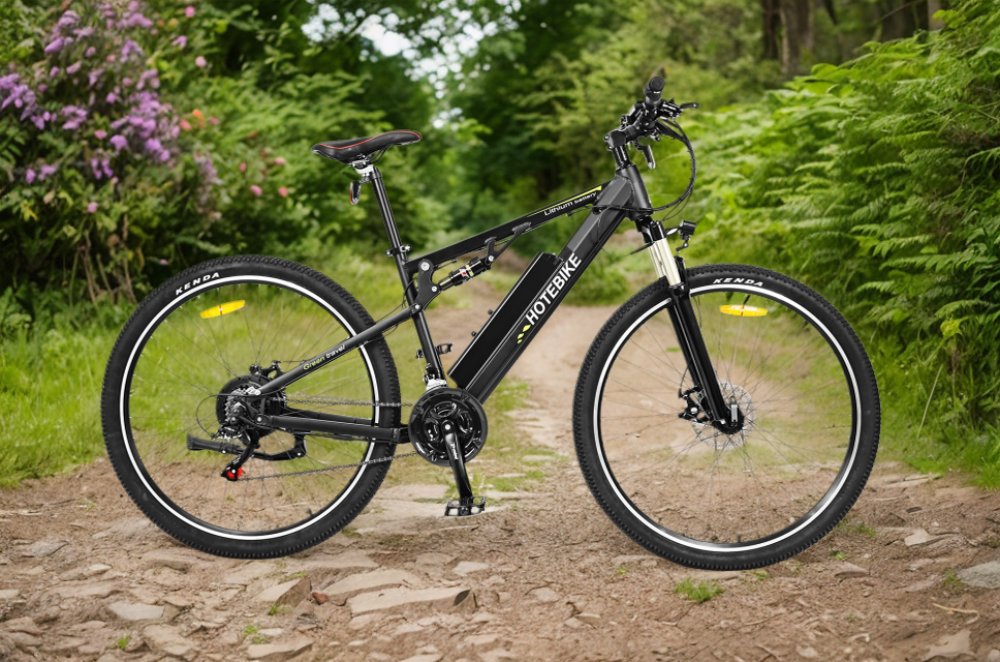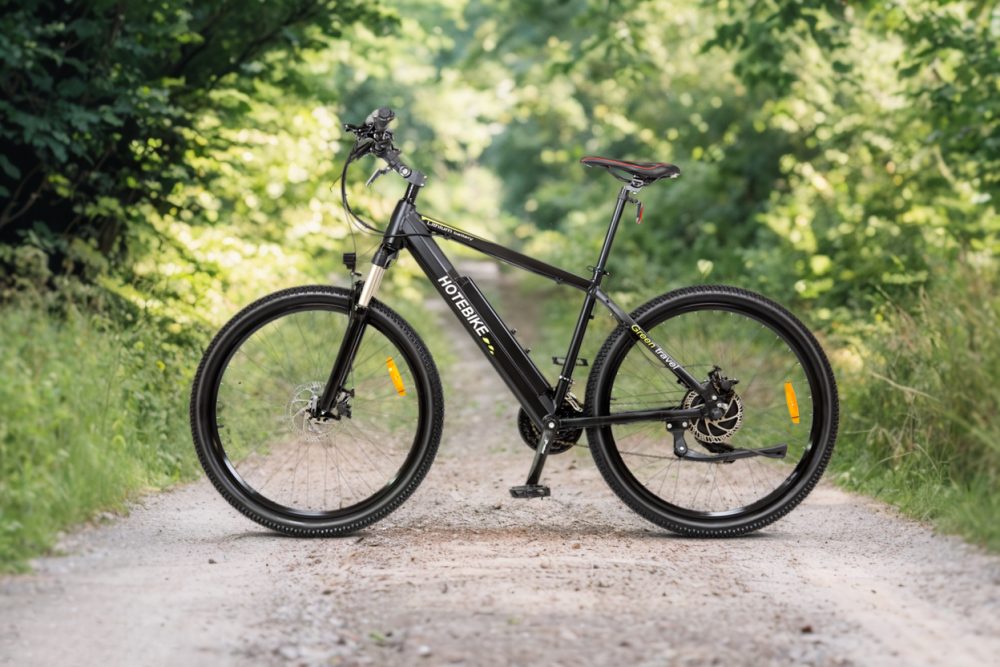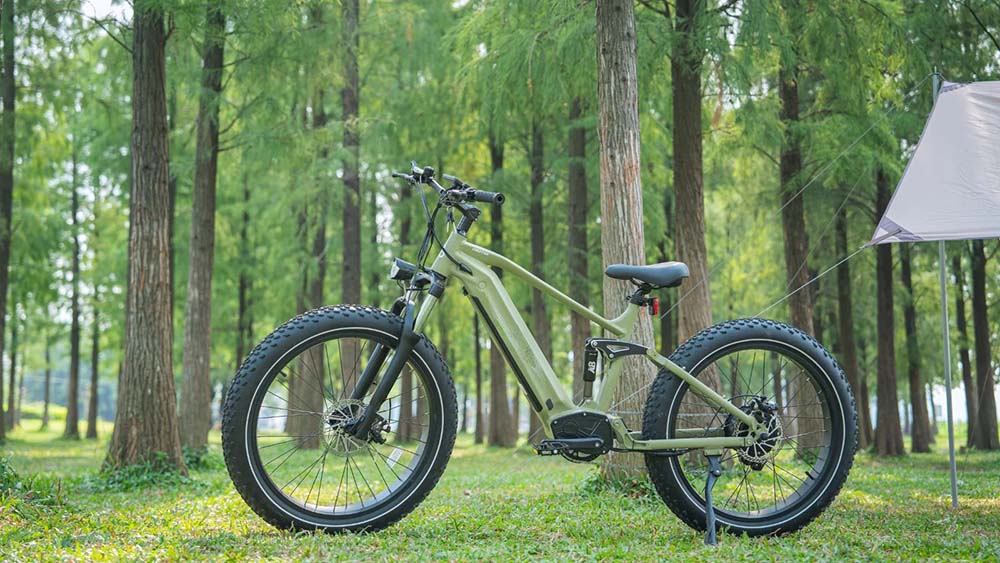Mountain Hardtail E Bike vs Full Suspension Ebike
When purchasing a new mountain e-bike or upgrading your suspension to better suit your needs, one of the key decisions you will be faced with is whether to choose a hardtail or full suspension model. Each option has benefits and considerations, and choosing the right option depends on weight, terrain, maintenance, and cost. This article delves into the debate between hardtail and full-suspension mountain e-bikes, providing clear insights to help you make an informed decision.
What is suspension?
Suspension refers to the advanced system that modern mountain e-bikes are equipped with, specifically designed to effectively absorb the relentless shocks and irregular vibrations experienced when travelling over rough terrain. This key system includes the front suspension (known as the fork) and the rear suspension (often referred to as the shock absorber), which together form the backbone of a full-suspension mountain e-bike.

Why is shock absorption critical for mountain e-bikes?
The main purpose of mountain e-bike suspension is to enhance rider comfort, control and traction by minimising the impact forces transmitted through the bike and rider. Here are the main reasons why suspension is important in mountain e-bikes:
1. Shock Absorption
Suspension systems are designed to absorb the impact energy generated when riding on uneven surfaces such as rocks, roots and drops. By absorbing these shocks, the suspension helps reduce the amount of bumps and vibrations transmitted to the rider’s body, resulting in a smoother, more comfortable ride.
2. Improved control
Suspension enhances a bike’s ability to maintain traction and control in challenging terrain. It keeps the wheels in contact with the ground, improving grip and preventing loss of control. This is especially important when riding through rough, technical trails, as the suspension helps the bike traverse obstacles more efficiently.
3. Enhanced stability
Suspension contributes to the overall stability of the bike. It helps keep the wheels in contact with the ground, improves balance and reduces the likelihood of losing your balance when encountering bumps or obstacles. This stability allows the rider to maintain better control and confidence, especially during higher speeds or aggressive manoeuvres.
4. Reduces fatigue
Riding a mountain e-bike on rough terrain can be physically demanding. Suspension helps to minimise the impact forces on the rider, thus reducing fatigue and discomfort. By absorbing shocks and vibrations, the suspension enables the rider to stay fresh on long rides, thus increasing endurance and off-road enjoyment.
5. Increased speed
By improving traction and control, suspension helps to speed up on technical trails. It allows the rider to maintain momentum, even on rough surfaces, smoothing out the ride and reducing the risk of slowing down or being thrown off route by obstacles.
Overall, suspension is a key component of a mountain e-bike as it significantly improves the riding experience by increasing comfort, control and traction. It enables riders to tackle challenging terrain with confidence, thus improving their overall performance and enjoyment on the track.
Mountain E-Bike Hardtail vs Full Suspension
The choice between a hardtail and full suspension depends heavily on your riding style, preferences, and the type of terrain you typically encounter. Let’s explore the key features and benefits of each option:

1. Hardtail suspension for mountain e-bikes
The term “hardtail” comes from the combination of the words “hard” and “tail”. “Hard” refers to the absence of suspension, while “tail” refers to the rear end of the bike. The term is widely accepted and commonly used to describe mountain e-bikes that lack rear suspension. Detailed features are listed below:
Lower maintenance and cost: Hardtails typically require less maintenance because they have fewer moving parts and no rear shock absorber. They are also more affordable than full-suspension bikes with a similar range of components.
Direct power transfer: hardtails excel in power transfer because the lack of rear suspension eliminates energy loss through the frame. This makes them particularly effective when climbing and sprinting.
Responsive and agile: the stiff rear end of the hardtail enhances responsiveness and allows the rider to feel more connected to the track. This responsiveness helps to manoeuvre around sharp corners and technical sections.
Weight advantage: hardtail bikes tend to be lighter than full-suspension bikes, which is beneficial for riders focused on maximising speed and climbing performance.
Good for flat terrain: hardtails excel on flat roads that offer plenty of traction. Their light weight and straightforward handling make them a popular choice for trail riding and less technical terrain.

2. Full-Suspension Mountain E-Bikes
Full-suspension mountain e-bikes, as the name suggests, have front and rear suspension systems. These bikes are intended for rugged and challenging terrains. The rear suspension is the defining feature of a full-suspension bike, and it offers several advantages:
Higher cost and maintenance: full-suspension bikes are usually more expensive due to the additional components and engineering required. In addition, the presence of a suspension system requires more maintenance and potential repair needs.
Enhanced comfort and control: The front and rear shock systems on full-suspension bikes significantly improve rider comfort by absorbing shock and reducing fatigue on long rides. The suspension helps maintain better traction on rough terrain.
Enhanced Confidence and Stability: Full-suspension bikes increase stability and confidence, especially when tackling challenging downhill and technical sections. The rear suspension ensures that the wheel maintains better contact with the ground, improving overall control.
Ideal for gravity-focused sports: full-suspension bikes are the first choice for gravity-oriented sports such as speedway and endurance racing, where enhanced traction, shock absorption and stability are essential for optimal performance.
Improved handling in rough terrain: the shock absorbing system on full-suspension bikes minimises the impact forces transmitted to the rider, resulting in a smoother, more controlled ride over rough terrain.
Conclusion
Keep in mind that choosing a Hardtail E Bike or a full-suspension mountain ebike depends on your personal preferences, the type of terrain you ride, and your preferred discipline focus. Consider factors such as cost, maintenance, responsiveness, comfort, control, type of terrain, and your primary discipline when choosing the right bike for your needs.
Once you’ve made your decision, check out Shuangye’s ongoing promotions to get the best price on the best electric bike.
Fill in the information below now and let our well-designed e-bikes and quality outdoor accessories take you on a journey to explore nature and unleash your passion for unlimited adventure!
 Shuangye ebike
Shuangye ebike
